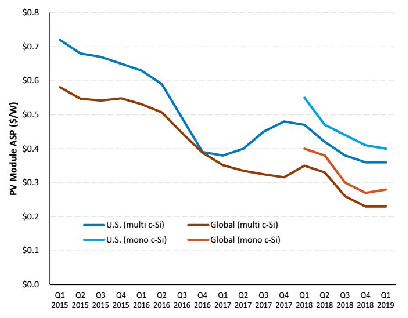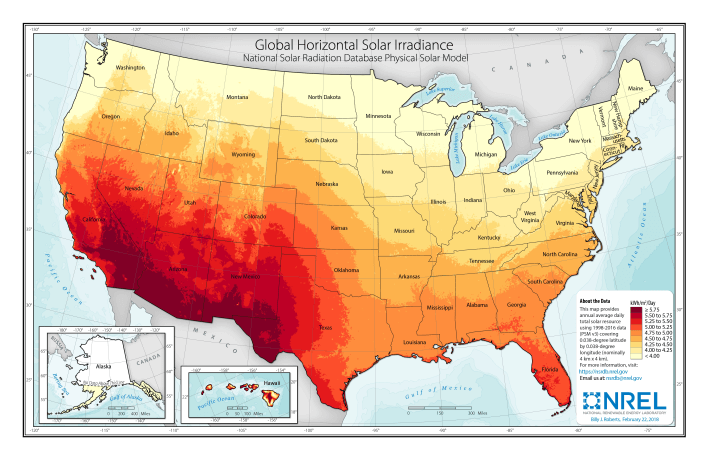Are RV solar panels worth the cost? 7 things you wished to consider before buying.
Disclosure: Some of the links in this post are affiliate links.This means if you click on the link and purchase the item or sign up for services I trust and recommend, then I will receive a commission at no extra cost to you. Thanks.
Nowadays, solar power has found its way in many areas of applications, among which are RV’s. There are many different types of solar panels that you can buy and mount on top of your vehicle. But, before you rush to do any purchases, there are important considerations that you have to make. Mostly, because of the DIY nature of RV’s solar power systems, you need to carefully plan the size of the system (Power in watts) that meets your energy needs the best. Otherwise, you can easily end up spending a lot of money on a system that is not worth its cost.
Solar power is one of the most environmentally friendly sources of energy out there. Even though I consider myself a passionate supporter of that, I am fully aware of the limitations of technology that is used to harvest energy from the sun. In fact, I created this blog to help other people better understand the different applications and uses of solar energy that are available today. Moreover, to expand my own knowledge about solar power generation technology.
So now, let’s deepen it:
#1 Which type of RV user are you?
Are you a weekender or full-time RVer? Are you going for boondocking (wild camping) a lot, or do you prefer to use campgrounds that provide electric hook-ups? Answering these questions is the first step to decide if you can get any benefit by installing solar panels on your RV.
The cost of the solar power system depends on its size (800 W system could cost you more than 8000$). A large RV solar power system will pay itself off, if you are actually going to use it for a long enough time.
If you don’t use your RV for boondocking or not frequently to justify the cost of a big system, but still want to try out solar power system, you still have an option. There are portable solar panels that you can use for recharging RV-batteries or to feed other DC appliances. They can be easily set up and oriented to catch more sunlight as possible, while you stop for camping in someplace.
But still, I don’t recommend to go further than 200 W with these type of panels. They will take precious space in your RV and you can’t use them while you are in movement. So, a bigger system would be beneficial, just if it’s installed on your RV’s rooftop.
#2 The solar panels produce less watt-power than their nominal value
Once you start looking for solar panels to buy, you’ll notice that they are sold with a nominal maximum power label (100W, 200W, etc.). In reality, it’s very unlikely that you can get these numbers from them. And the main reason is that they are obtained in the laboratories under standard test conditions (STC).
Temperature ºC (ºF) Solar Irradiance W/m^2 Air Mass Spectra (AM) 25 (77) 1000 1.5
Standard Test Conditions (STC)
| Temperature ºC (ºF) | Solar Irradiance W/m^2 | Air Mass Spectra (AM) |
|---|---|---|
| 25 (77) | 1000 | 1.5 |
This standard is used by manufacturers to rate their PV panels. When it comes to real operating conditions however, there are many other factors that will affect their performance. The first of them is the temperature. PV panels under operating conditions have a much higher temperature that will decrease the expected peak power.
There is another test called PTC (PVUSA Test Conditions) that is meant to be more realistic by setting solar cells temperature at 113 ºF (45 ºC) and considering a certain amount of wind. But many manufacturers don’t have this value listed on their product specifications.
To give you an idea of the PV panel performance under these two different tests, I give you an example from The Go Solar California database.
Manufacturer Description Nameplate Pmax (W) PTC (W) Konca Solar Cell Monocrystalline 175 154.1 Konca Solar Cell Polycrystalline 175 153.6 Renogy Monocrystalline 175 154.1 Ritek Polycrystalline 175 155.4
Rating results: STC vs PTC
| Manufacturer | Description | Nameplate Pmax (W) | PTC (W) |
|---|---|---|---|
| Konca Solar Cell | Monocrystalline | 175 | 154.1 |
| Konca Solar Cell | Polycrystalline | 175 | 153.6 |
| Renogy | Monocrystalline | 175 | 154.1 |
| Ritek | Polycrystalline | 175 | 155.4 |
As you can see, under more realistic conditions, you have to expect from 10% to 15% less of peak power as they declare.
The problem is that most manufacturers don’t report PTC values in their specification sheets. But, if you have a little patience for some math, you can use another data from the panel specifications in order to calculate a more realistic value that you can expect from the solar panel you are going to buy.
That is called NOCT (Nominal Operating Cell Temperature). You can find out how, here.
#3 Sunlight is the key factor
As you can guess, the amount of energy that a PV panel will produce, depends on how much sunlight (solar irradiance) it gets. Therefore, the number of solar panels you will need and consequently, the cost of your system are set buy sunlight.
To estimate the amount of energy that a PV panel can gather from sunlight each day, you have to know the average of “sun hours” for the location that you are going to use your RV the most. The term “sun hours” is a technical term, and it’s a different thing from the hours of a day. It takes into account the weather, the sun inclination in different seasons, the position of the sun in the sky during a day, and will tell you how many hours of sun, that will provide the most energy (1000 W/m^2), you will have.
For example, if a PV panel has a nominal maximum power (peak power) of 100 W, and the average sun hours for its location in November is 3 h, it can produce 300 Wh (25 Ah if considering that it work at 12 V) of energy each day in that month.
So, you need to find out the average sun hours, for the period of the year that you are going to use your RV the most. Or, if you are a full-time RVer, for the period of the year that you need more power.
You can find the average of solar hours for each month from so called insolation maps. The solar insolation, to put it simply, is the amount of solar irradiance (energy) per unit area (W/m^2), that we receive on earth, over a period of time (Wh/m^2).
If you live in the United States, use U.S. State Solar Resource Maps. In these maps, they have already calculated the average sun hours for you. Just remember to look for global horizontal irradiance maps. Because the solar panels on the roof of your RV are mounted in a flat position (parallel to the earth’s surface). The direct normal irradiance data are good for residential panels where they calculate the tilt of the panels in order to get the most energy from the sun.
U.S. Solar Insolation Map [src]
I personally prefer PVGIS tool. You can use it both for the U.S. and the rest of the world. Select your position on the map, set the tool for monthly data and global horizontal irradiation, and you will get the solar insolation in kWh/m^2. You can next, find the average sun hours, just by dividing the solar insolation value by the number of days for that period of time. For example:
Solar insolation in January = 79.2 kW h/m2 ⇒ Sun hours= 79.2/31= 2,5 h
Solar insolation from March to May = 511 kW h/m2 ⇒ Sun hours= 511/92= 5,5 h
For those who want to get more technical, I have to say that the above calculation is not correct! You have to first, calculate the so called equivalent sun hours (EHS) and then convert it to the sun hours per day. But the final result doesn’t change (considering 1 equivalent sun= 1000 W/m2 of solar irradiance).
#4 Which type of PV panel should you buy?
I guess you already know that there are three types of PV panels in the market that you can choose for your RV:
- Monocrystalline, rigid solar panels
- Polycrystalline (Multicrystalline), rigid solar panels
- Thin-film, flexible solar panels
Here I don’t want to get into the technology differences of these panels. When it comes to choosing the right type of solar panel for your RV, the first thing that you have to consider is your RV’s rooftop space. The most efficient solar panels, will take less space on your RV’s rooftop. But more efficient PV panels are also more expensive. So you have to find a panel with the right balance between cost and efficiency.
You can find monocrystalline and polycrystalline, within the same range of efficiency. Even though in the extreme spectrum, the monocrystalline panels are more efficient. It actually doesn’t matter which one you are going to choose. As long as they generate the power you need and they fit on your RV’s rooftop, you are good to go.
![]()
Average Crystalline-Silicon PV Module Efficiency [src]
On the other hand, thin-film panels require more attention. They are not as durable as rigid panels and in general, are more expensive. Also, on average, they are less efficient. It means they will take more surface on your RV’s rooftop per unit of power. However, their performance is not affected considerably by temperature, they are lightweight, and have a relatively simpler installation process (they don’t require drilling).
#5 Select the right type of battery for your system
Even though it is possible to send electricity directly from solar panels to devices, that is not a clever way to use solar energy. Solar panels cannot generate electricity during night times and their energy production is not consistent during the day. Therefore, in an off-grid PV system, solar panels are mostly used to recharge batteries as a reliable source of electricity during the night and periods of limited sunlight.
Batteries are one of the most important components of a stand-alone, solar power system. Depending on how much energy you need, and how many hours of autonomy you want to have, they also could become the most expensive component of your system.
The two main categories that you can choose from are:
- Lead-acid
- Lithium-ion
Studies show that Li-ion batteries have higher efficiency, faster charging capabilities and 5-10 times the life cycle of lead-acid batteries.
Battery Type Retail Cost (USD) Estimated life (Cycle) Flooded Lead-Acid $185 500 AGM Lead-Acid $270 400 Gel Lead-Acid $400 1,000 RELiON RB100 LiFePO4 $1,050 7,100
Batteries Cycle Life Comparison
| Battery Type | Retail Cost (USD) | Estimated life (Cycle) |
|---|---|---|
| Flooded Lead-Acid | $185 | 500 |
| AGM Lead-Acid | $270 | 400 |
| Gel Lead-Acid | $400 | 1,000 |
| RELiON RB100 LiFePO4 | $1,050 | 7,100 |
Lead-acid has a drastically lower upfront cost. But you have to look at the cost over lifetime, in order to decide the right battery type for your system. Li-ion can even be preferable in terms of price when the upfront cost is divided over their entire operational lifetime. You can use the table below as a sample for a comparative life-time cost study between different types of batteries.
COST FACTOR FLA AGM GEL RELION RB100 Purchase Cost $185 $270 $400 $1,050 Installation Cost $25 $25 $25 $25 Maintenance Cost $525 40 40 0 Charging Cost 970 970 970 850 Replacement Cost 2,600 5,450 3,000 0 Replacement Labor 700 1,000 375 0 # of Replacements 14 20 7 0 # of Cycles Over Life 500 400 1,000 7,100 TOTAL COST OVER LIFE $5,005 $7,755 $4,435 $1,925 Cost Per Cycle $0.67 $0.92 $0.55 $0.27
Total Cost Over Life Comparison
| COST FACTOR | FLA | AGM | GEL | RELION RB100 |
|---|---|---|---|---|
| Purchase Cost | $185 | $270 | $400 | $1,050 |
| Installation Cost | $25 | $25 | $25 | $25 |
| Maintenance Cost | $525 | 40 | 40 | 0 |
| Charging Cost | 970 | 970 | 970 | 850 |
| Replacement Cost | 2,600 | 5,450 | 3,000 | 0 |
| Replacement Labor | 700 | 1,000 | 375 | 0 |
| # of Replacements | 14 | 20 | 7 | 0 |
| # of Cycles Over Life | 500 | 400 | 1,000 | 7,100 |
| TOTAL COST OVER LIFE | $5,005 | $7,755 | $4,435 | $1,925 |
| Cost Per Cycle | $0.67 | $0.92 | $0.55 | $0.27 |
#6 Importance of solar panels warranties
All solar panels lose their efficiency slowly with time. In a research done by The National Renewable Energy Laboratory (NREL) degradation rate of 0.8% per year on average for silicon based and 0.7% per year for thin-film panels was reported.
Not all PV panels are made the same. So if you want to get the best PV panel for your bucks, you have to pay attention to their warranty plan. Manufacturers have two types of warranty that you should pay attention to:
- Power output warranty (Performance warranty): It will guarantee electricity production at a certain percentage of rated power, over a period of time. For example 5 year/95% efficiency rate, 10 year/90% efficiency rate, 25-year/80% efficiency rate.
- Product Warranty (Material and workmanship warranty): It will guarantee the production quality of the panel against defects. Usually, home PV panels have at least 10 years, while for the RV panels, 5 years are standard.
#7 How long it will take to recover your investment?
Besides the environmental benefits, I think the possibility of having free electricity is one of the most intriguing aspects of the solar power technology. After your initial investment, the maintenance cost of a PV panel is almost nonexistent. Of course some system component may require care or even replacement at some point in the future, but you can include these costs in your initial budgeting phase.
Once you decide to buy solar panels for your RV, you should carefully plan the size of your system and its components from the beginning. A well-thought-out system will pay off faster.
To estimate the amount of time that will take for your system to repay itself, you should calculate:
- Initial investment: Including the cost of all components, installation cost and the future maintenance cost.
- Annual return: Total electricity cost that you had before installing your PV system per year.
payback time = initial investment / annual return
Conclusion
The cost of solar panels has dropped drastically over the years. According to the 2019 NREL solar industry report, Multi crystalline and Mono crystalline modules sold in the United States were 23% and 27% lower in price than modules sold in 2018 respectively. However the prices were 57% and 43% higher than the global average.

Solar panel average selling price: Global vs United States [src]
That said, the cost of components for small size systems such as RVs, are still higher on average. You have to evaluate and plan your RV system based on your personal needs. In general for an RV user, even with a big PV system, a good strategy would be to have at least a small generator as a backup. So, in case you get stuck with some days of bad weather, you still can recharge your RV batteries.
References
[1] Fraunhofer Institute for Solar Energy Systems ISE.
[2] The National Renewable Energy Laboratory (NREL).
[3] Keshan, Hardik & Thornburg, Jesse & Ustun, Taha Selim. (2016). Comparison of lead-acid and lithium ion batteries for stationary storage in off-grid energy systems. 30 (7 .)-30 (7 .). 10.1049/cp.2016.1287.
[4] U.S. Department of Energy’s Office of Energy Efficiency and Renewable Energy (EERE).
[5] Go Solar California.
[6] EU Science Hub.
[7] NASA.
[8] Relionbattery.

